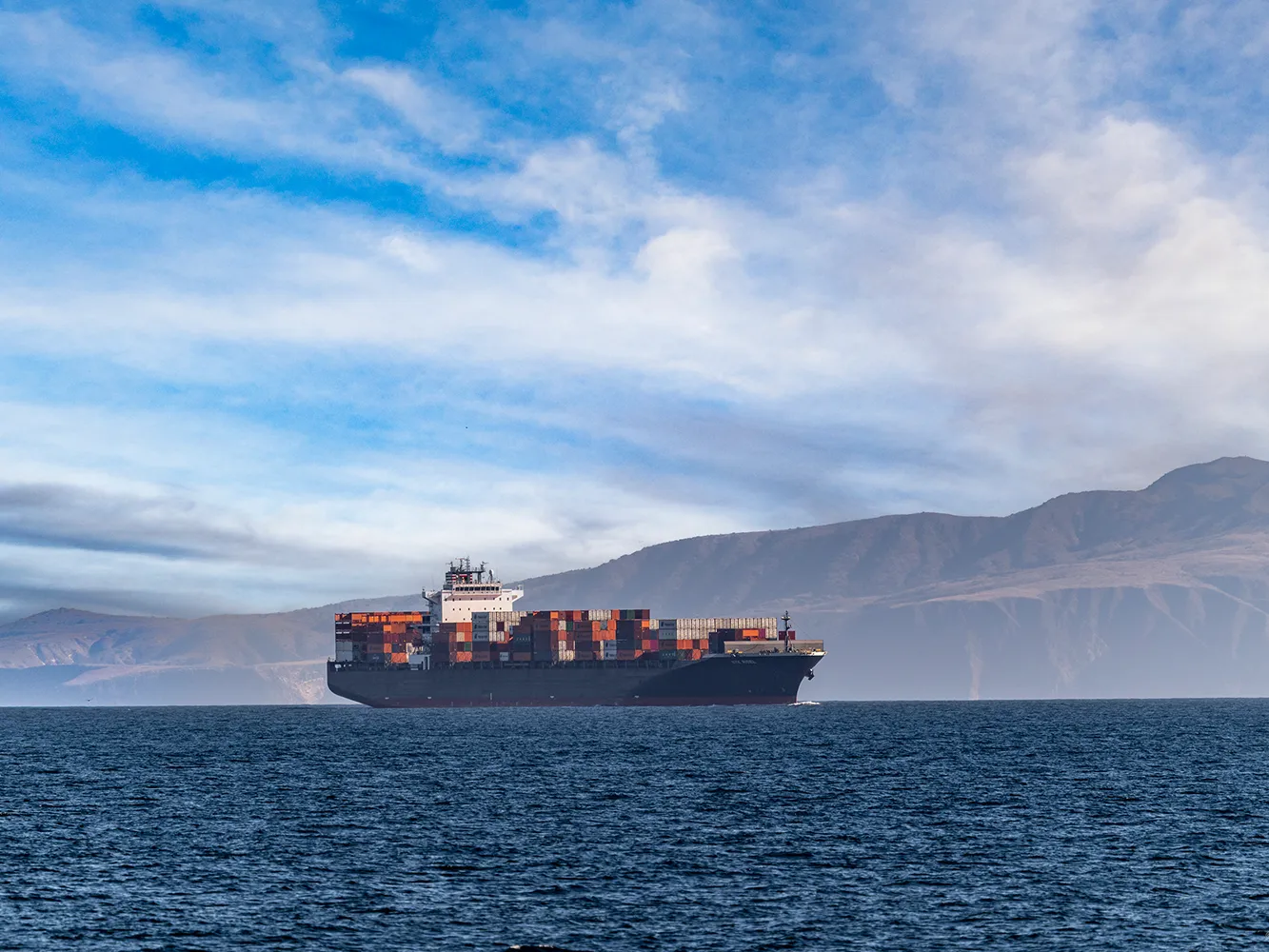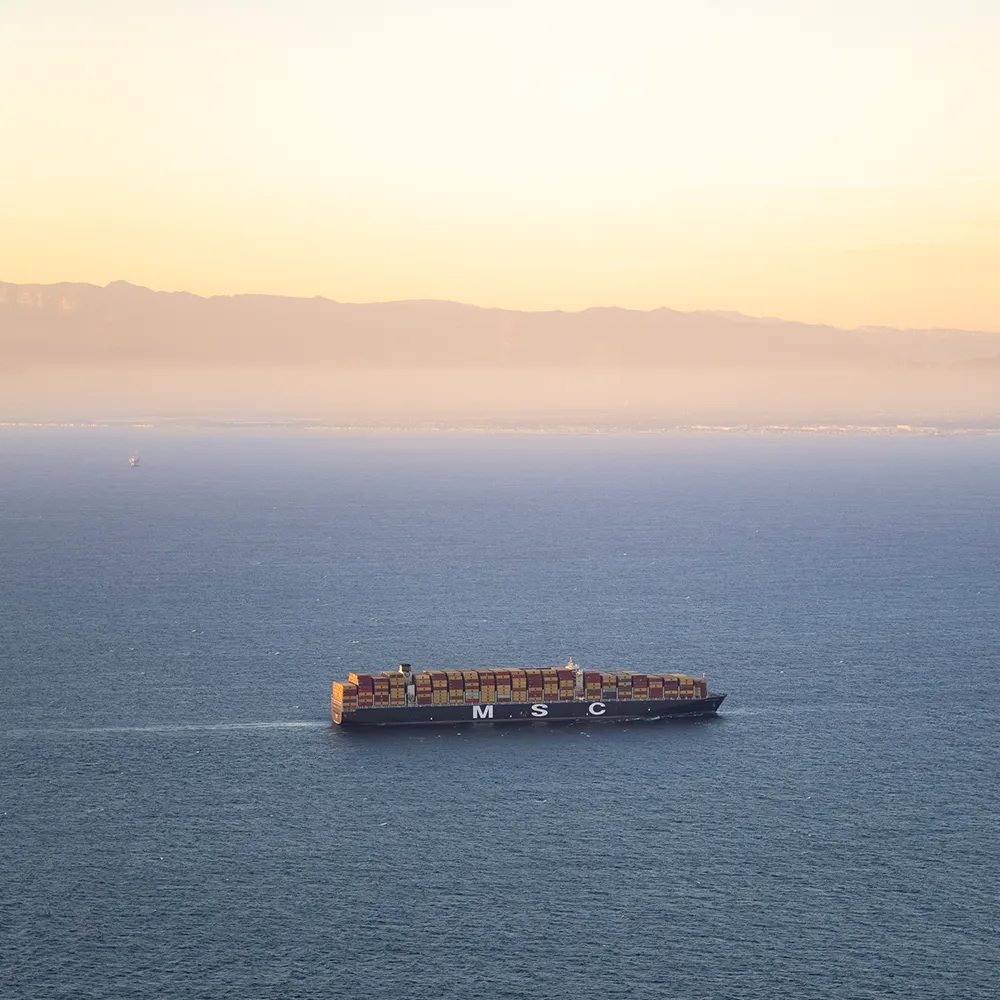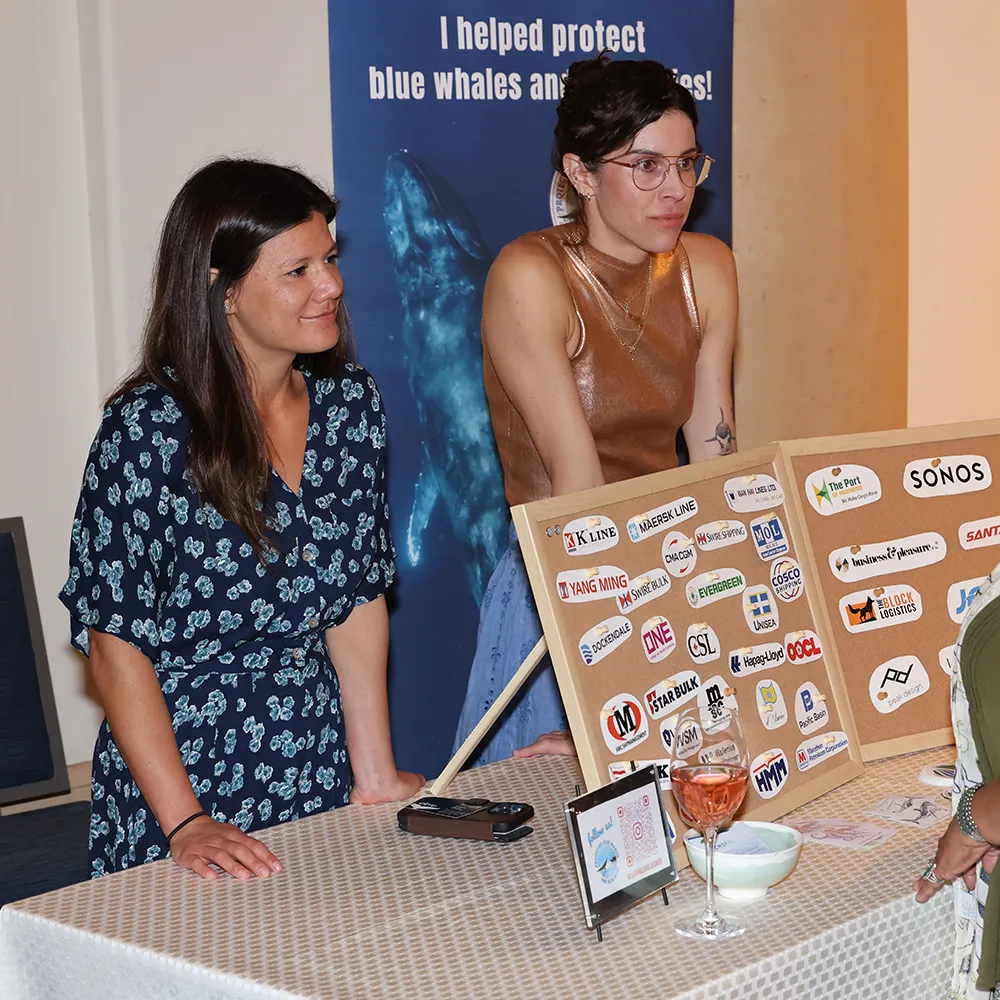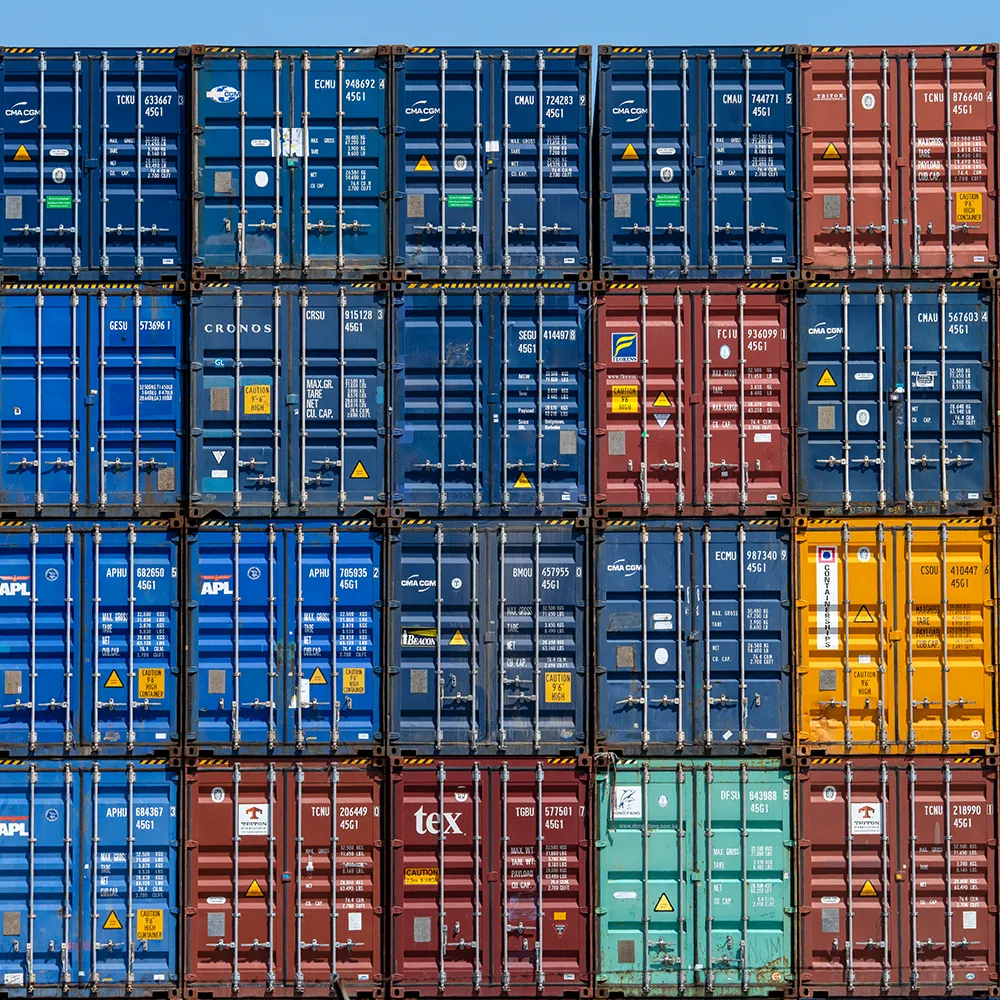
Photo: Dustin Harris
Underwater Noise and Marine Animals
Whales have evolved over the millennia to use sound for their daily life functions. Noise pollution disrupts these essential behaviors, threatening their ability to thrive.
The low-frequency noise produced by large vessels masks the communication signals of whales, dolphins, and other marine species, disrupting social interactions, mating calls, and mother-calf bonding.
Reducing noise pollution generated by ships has become a conservation priority for the United Nations’ International Maritime Organization.
Vessel speed reduction (VSR) is one operational noise reduction management action, as ships traveling at reduced speeds emit less noise.
Reducing Underwater Noise one Ship at a Time
Participating shipping companies in the Protecting Blue Whales and Blue Skies program voluntarily reduce their speeds to 10 knots in VSR zones, reducing underwater noise as well as the risk of ship strikes to endangered whales, greenhouse gas emissions, and air pollution.

Photo: Ralph Clevenger Wildlife
How We Measure Progress
Noise reductions associated with the program are determined by comparing underwater radiated noise of participating vessels during the VSR season versus time periods outside the VSR season. The program partners with the Scripps Machine Listening Lab and Dr. Vanessa ZoBell, at the Scripps Institute of Oceanography for underwater noise analysis.



